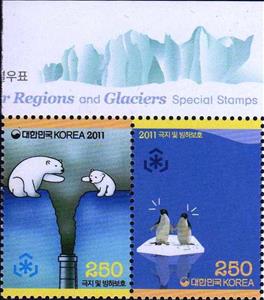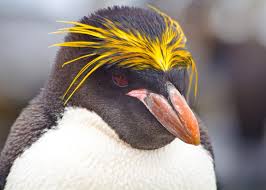Se-tenant: Se-tenant Pair (Korea, South 2011)
Se-tenant Pair (Korea, South 2011)
03 June (Korea, South ) within release Preserve the Polar Regions and Glaciers goes into circulation Se-tenant Se-tenant Pair face value 2*250 Korean won
| Se-tenant Se-tenant Pair in catalogues | |
|---|---|
| Michel: | Mi: KR 2820-2821 |
Se-tenant is square format.
Also in the issue Preserve the Polar Regions and Glaciers:
- Stamp - Environment & Conservation (Global Warming) face value 250;
- Stamp - Environment & Conservation (Global Warming) face value 250;
- Se-tenant - Se-tenant Pair face value 2*250;
|
Data entry completed
46%
|
|
|---|---|
| Se-tenant Se-tenant Pair in digits | |
| Country: | Korea, South |
| Date: | 2011-06-03 |
| Emission: | Definitive |
| Format: | Se-tenant |
| Face Value: | 2*250 Korean won |
Se-tenant Se-tenant Pair it reflects the thematic directions:
Bears are carnivoran mammals of the family Ursidae (/ˈɜːrsɪdiː, -daɪ/). They are classified as caniforms, or doglike carnivorans. Although only eight species of bears are extant, they are widespread, appearing in a wide variety of habitats throughout most of the Northern Hemisphere and partially in the Southern Hemisphere. Bears are found on the continents of North America, South America, and Eurasia. Common characteristics of modern bears include large bodies with stocky legs, long snouts, small rounded ears, shaggy hair, plantigrade paws with five nonretractile claws, and short tails.
Environmental protection is the practice of protecting the natural environment by individuals, groups and governments.Its objectives are to conserve natural resources and the existing natural environment and, where it is possible, to repair damage and reverse trends.
Penguins are a group of aquatic flightless birds from the family Spheniscidae (/sfɪˈnɪsɪdiː, -daɪ/) of the order Sphenisciformes (/sfɪˈnɪsəfɔːrmiːz/). They live almost exclusively in the Southern Hemisphere: only one species, the Galápagos penguin, is found north of the Equator. Highly adapted for life in the ocean water, penguins have countershaded dark and white plumage and flippers for swimming. Most penguins feed on krill, fish, squid and other forms of sea life which they catch with their bills and swallow whole while swimming. A penguin has a spiny tongue and powerful jaws to grip slippery prey
The polar bear (Ursus maritimus) is a large bear native to the Arctic and nearby areas. It is closely related to the brown bear, and the two species can interbreed. The polar bear is the largest extant species of bear and land carnivore, with adult males weighing 300–800 kg (660–1,760 lb). The species is sexually dimorphic, as adult females are much smaller. The polar bear is white- or yellowish-furred with black skin and a thick layer of fat. It is more slender than the brown bear, with a narrower skull, longer neck and lower shoulder hump. Its teeth are sharper and more adapted to cutting meat. The paws are large and allow the bear to walk on ice and paddle in the water.




